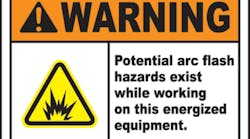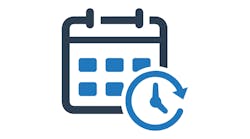Isolating equipment from its power sources before working on it is much safer than “working hot.” But it’s not always an option. For example, you may need to:
- Perform infrared analysis.
- Conduct operational testing.
- Perform rotational analysis on a motor.
- Make electrical measurements while the equipment is operating under load.
When working with energized equipment, you still might perform lockout/tagout. Usually, this would entail isolating equipment from its output(s).
For example, you’re troubleshooting a control system. You don’t want the final control elements moving all over the place. So after consultation with the operators, you use a loop simulator to put the control valve at the 50% open position. You also open the disconnect for the mixer motor, making sure to lock and tag it out.
Basically, you’re taking the system out of service to prevent undesired operation, but you’re still exposed to energized equipment because you’re working on it.
First, determine what arc flash and touch hazards may exist. Look for ways to protect against them.
- Examples of temporary protection measures include using rubber blankets and other such barriers and using test equipment with remote and non-contact features.
- Examples of permanent protection measures include installing remote controls, remote testing ports, and infra-red testing windows.
We’ll look at other measures, in Part 2.



